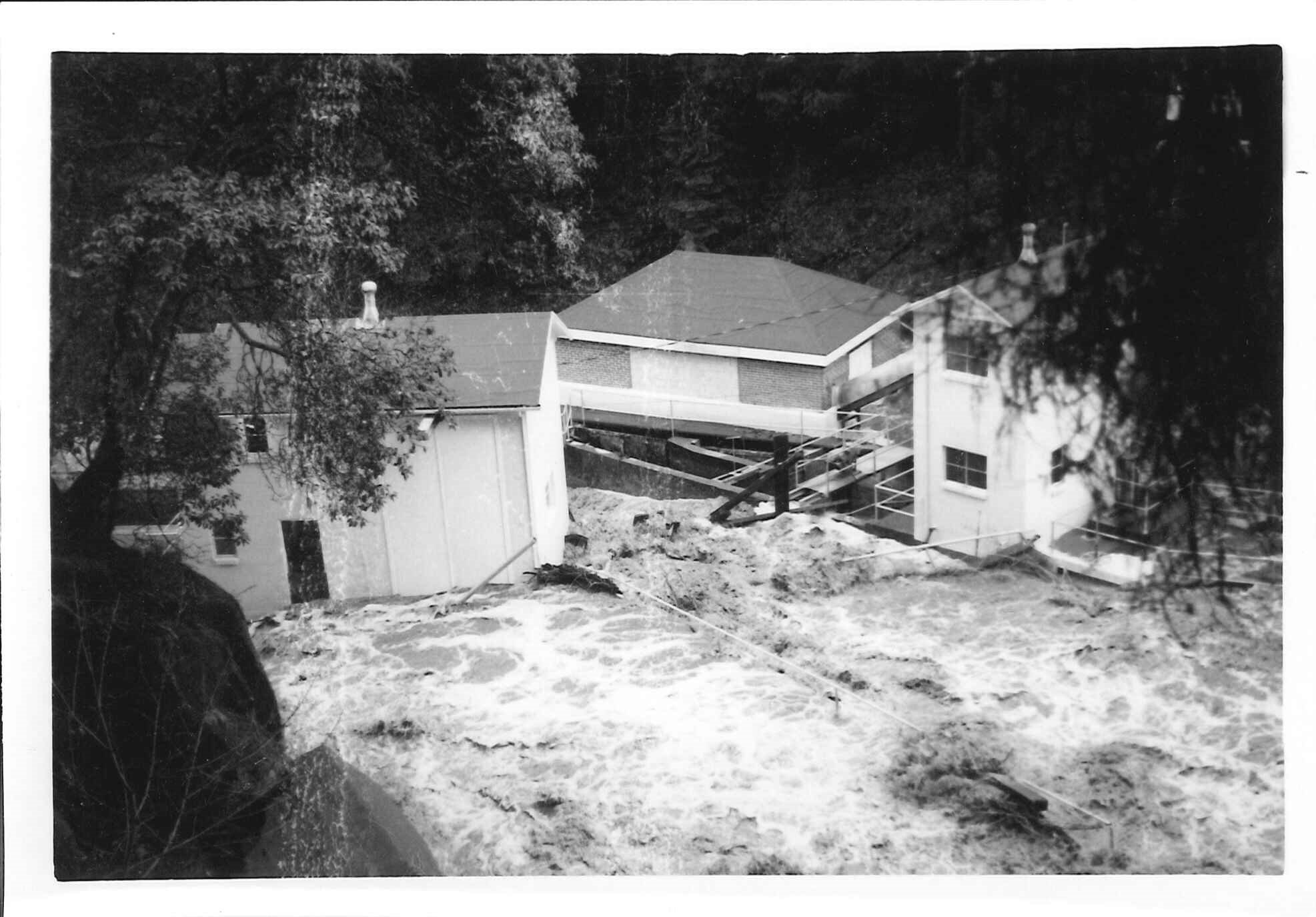Building a New Water Treatment Facility
Our water treatment plant was built in 1949 and has been upgraded several times since then as needs and regulatory requirements have changed. The plant is perched in a narrow canyon that has always been at risk of flood, but now faces increasing risk from wildfire. We also understand our earthquake and landslide risk better than in the past. If we had a crystal ball back when we first built the plant, we likely would not have built it where it is. As it is, it is not possible to address any of these issues fully, and in a cost-effective way, because of the limitations of the site.
We reached a point several years back where it became clear that we needed to either invest significantly in the current plant or build a new one at a different location. The initial plan was to upgrade the existing plant until the analysis showed that repairing the existing plant was not the most cost-effective option, nor did it adequately address the physical risks to the water treatment plant.
Toxic Algal Blooms Complicate the Picture
Since then, toxic algal blooms have become a bigger issue in communities across Oregon because of warming surface water temperatures due to climate change. Staff is seeing signals from the Oregon Department of Environmental Quality that they will begin developing rules to require water treatment facilities to be able to treat water in ways that prevent the problems associated with these algal blooms. This requirement is expected to come into play during the life of either the new plant or an upgraded existing plant. The current water treatment site cannot accommodate that new technology unless we blast a hole in the side of the mountain to make room.
Two Options for Our Drinking Water
One option before us is to spend an estimated $35 million on a new plant in a different location that will fully address our seismic, landslide, flooding, and wildfire issues. It will also use less energy than the current facility. Note this figure is from the updated presentation in September that includes cost escalation for supplies, labor, and interest as well as upgrades for climate considerations. This would begin a 100-year life expectancy for the new plant.
The other option is to spend $27.2 million to upgrade the existing facility and add the toxic algal bloom treatment function in order to get another 28 years out of our current facility. This assumes the plant is not destroyed by a wildfire, flood, earthquake, or landslide before the 28 years is up. At year 28, we will need to build a new water treatment plant. Our Public Works Director, Scott Fleury, gives a very helpful overview of the options and their costs in this video (starts at minute 12:30).
Managing Risk
One of the important elements of managing risk is to determine how big of a problem it will be if an event happens. In the case of our water treatment plant, if we try to patch the facility and it is destroyed by a wildfire, flood, earthquake, or landslide, Ashland will be without adequate clean drinking water until it can be re-built. We could tie into the Talent/Ashland/Phoenix system, but it would not meet even the basic water needs of our residents for most of the year.
Hosting tourists would not be an option for at least a year, likely longer, while the facility is built in a new location. Our lives and the Ashland economy would be seriously disrupted for a long time and the facility would be even more costly to replace in that situation – infrastructure projects with this kind of time pressure are always more expensive than if you can take your time and move methodically through the process. The cost of repairing the existing plant is only 20% less than the cost of building a new one. That makes a new plant a good investment, particularly when we consider that it will fully address wildfire, earthquake, landslide, and flooding risk.
Impacts on Ratepayers
Affordability is a very important issue currently and will remain so in the future, so the long-term impact on rates from these two options is also very important. Building a new water treatment plant is significantly cheaper over the life of the investment and that means lower rates for Ashland residents than what they will experience if we invest in our ailing plant.
Climate Resilience
Something else to think about as we consider long-term infrastructure investments is how changing climate conditions and accelerating disruption will impact the ability of future generations to make significant infrastructure investments. Because of this, we must secure our essential infrastructure and make sure it can clear at least the next thirty to forty years whenever possible. This is one of the ways we care for future generations.
Thank you for reading this post. If you have questions or comments, please email me at tonya@council.ashland.or.us.

